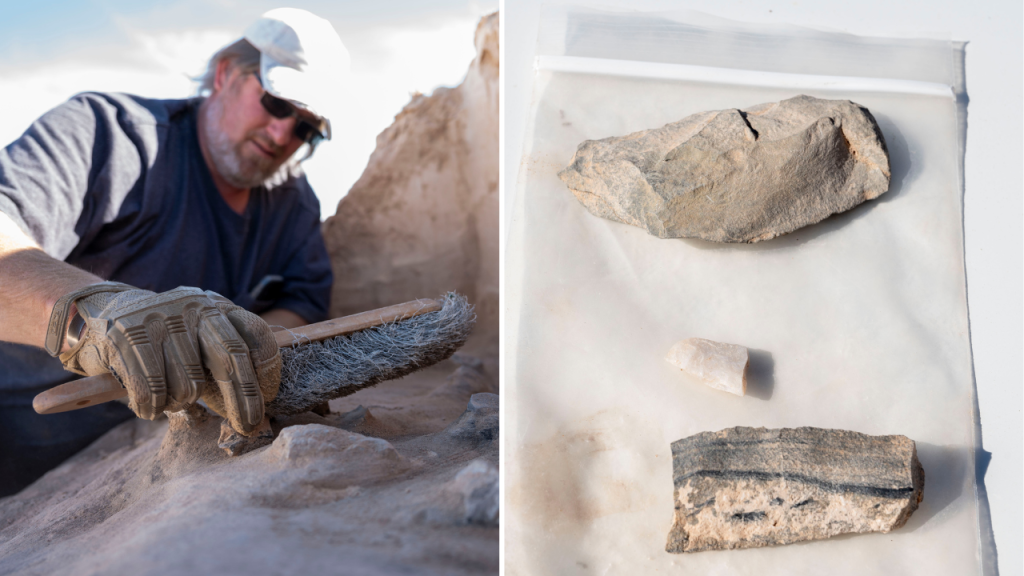United States Air Force (USAF) service members recently discovered an ancient campsite dating back over 8,000 years on Holloman Air Force Base. The site, named Gomolak Overlook, is believed to have been inhabited by the earliest settlers of New Mexico. The 8,200-year-old campsite was found buried around two meters deep by the 49th Civil Engineer Squadron environmental flight members and geomorphologists in March. Sands from the nearby White Sands National Park buried the site over thousands of years, with windblown silt protecting the delicate archaeological remains. The campsite contained the remains of a hearth and approximately 70 items, providing valuable clues about past human activities.
The artifacts discovered at the ancient campsite will be studied and preserved in accordance with the National Historic Preservation Act. 49th CES environmental chief Scott Dorton emphasized the importance of ensuring the site’s integrity while facilitating the progress of the test track project on the base. The Department of Defense’s stewardship of vast tracts of land, including areas between White Sands National Park and Holloman, inadvertently protects numerous archaeological resources in the region. Some of the best-preserved archaeological records in the Tularosa Basin are located on DoD land, highlighting the significance of the discovery.
The discovery of the ancient campsite offers insights into early human adaptation and environmental changes in the region. As stewards of these resources, the USAF is committed to ensuring their preservation and documentation for future generations while allowing for progress and development. The cultural resources must be protected while also facilitating the advancement of projects on the military base. The USAF highlighted the importance of preserving such archaeological sites for future generations to learn about the area’s history and early inhabitants.
49th CES cultural resource manager Matthew Cuba noted that the site marks a pivotal moment in shedding light on the area’s history and its early inhabitants. The presence of hearths and remnants of mesquite charcoal at the campsite provides valuable information about the activities of the ancient settlers. The artifacts found, ranging from flake stones to a rare example of an early ground stone, offer important clues about past human activities in the region. The USAF officials expressed the significance of the discovery in uncovering the history of the earliest settlers of New Mexico.
Adhering to the National Historic Preservation Act, the USAF ensures that all necessary steps are taken to preserve the site’s integrity while supporting the progress of projects on the base. The protection and documentation of cultural resources play a vital role in preserving the heritage of the region for future generations. The artifacts found at the ancient campsite will be carefully studied and preserved to enrich our understanding of the area’s history and early inhabitants. The USAF’s commitment to safeguarding these archaeological resources reflects the importance of balancing preservation with development in the region.
The USAF’s discovery of the ancient campsite on Holloman Air Force Base highlights the rich archaeological heritage of the region and sheds light on the early human adaptation and environmental changes in the area. The careful study and preservation of the artifacts found at the site contribute to our understanding of the history and culture of the earliest settlers in New Mexico. The USAF’s stewardship of archaeological resources on its land underscores the importance of protecting and documenting cultural heritage for future generations. The discovery of the ancient campsite offers a glimpse into the past and provides valuable insights into the lives of the early inhabitants of the region.


